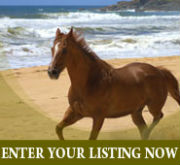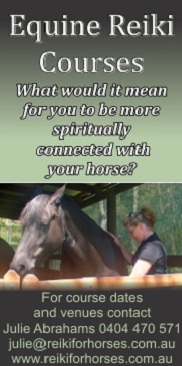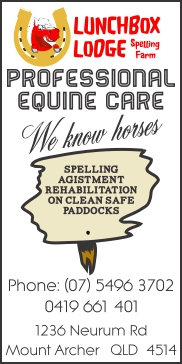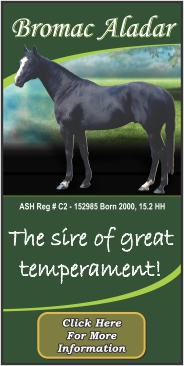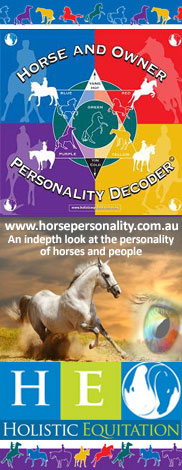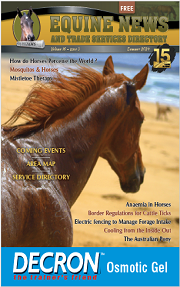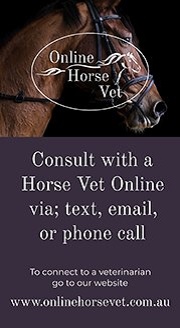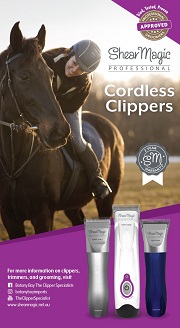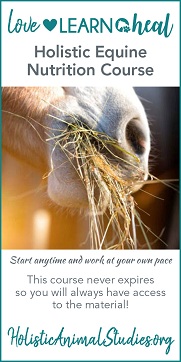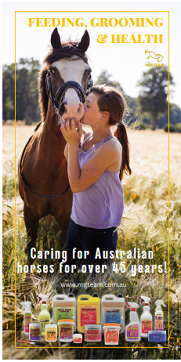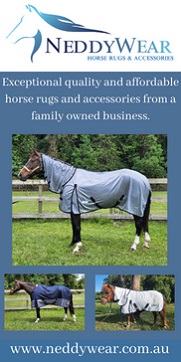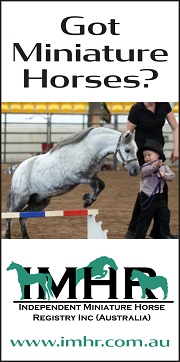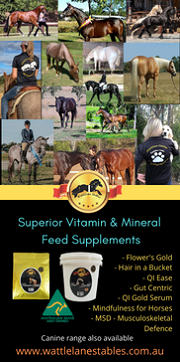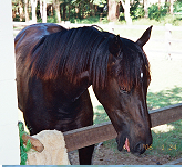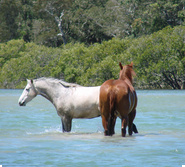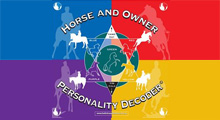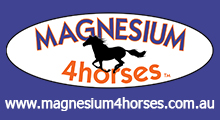By Mel Fleming
How do you get your horse to have a smile on his face?
Get his respect.

Respect is something that is earned and given freely. It can’t be bought and it doesn’t come via force, we cannot demand it. Respect has no fear in it. It means to admire, hold in high regard and show courtesy toward. If we wish horses to respect us then we first must respect them, because respect needs to be mutual. When your horse admires you and holds you in high regard that is when he will have a smile on his face when doing things with you.
So how do we earn a horse’s respect ?
Horses will respect us when we truly respect them. Respect requires understanding and increases when our depth of understanding increases. Here are some areas that we need to acknowledge and learn more about with horses.
¨ We need to understand horses as prey animals with prey animal instincts.
¨ We need to acknowledge them as sentient and deeply emotional beings, feeling the full range of emotions that we are able to feel.
¨ Horses have a need for mental and physical stimulation and a sense of purpose in what they are doing.
¨ They are of high intelligence even though their brain thinks differently to ours.
¨ We need to understand them physically, their health, fitness, movement, balance and biomechanics, especially if we are intending to ride them.
¨ Horses are highly perceptive to the energetic flow of thoughts and emotions of those around them and the environments that they are in. Sensing, seeing and hearing much more than most humans do.
¨ Horses are also carrying out a higher purpose of supporting us and teaching us authenticity, which is to become our true selves without pretence, emotional baggage or ego.

When horses can feel that our core intention is to do something ‘for’ them and ‘with’ them rather than ‘to’ them and we are not just using them for our own financial or egotistical advancement they will respect us. Horses can always read what our innermost motivation is – they are masters of truth, both reading it and displaying it.
If our intention is for their highest and best good we can start gaining a horse’s respect by gaining their interest, attention and curiosity. Respect is further developed when we show them, through every thing that we do with them, that we are listening, understanding and responding with compassion to meet their needs, as we work together towards achieving a goal. We are not just using them for our own selfish desires. Following are some practical ways to do this.
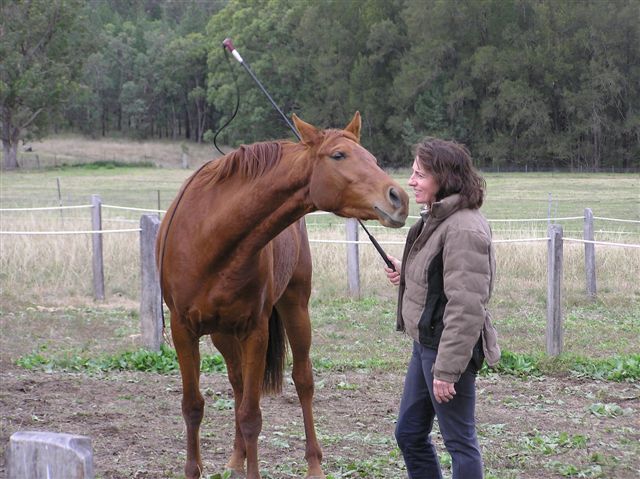
Responding to what they are thinking.
For example, you will be reading and responding to what they are thinking when you reward them for thinking on the right track when they are learning something new. Reward them or release, when they think about doing what you have in mind, then the feet and the body will follow. Direct, support or encourage them the moment they change their mind and are not thinking about what you have in mind. Keep their attention because if you haven’t got their attention you haven’t got anything. With practice reading their thoughts at the most basic level is simple because what they are thinking is displayed clearly through their bodies. Horses will respect us when we are in tune enough to keep mental connection and engagement with them and thus keep their attention.
Knowing how they are feeling physically.
Only asking horses to do what they can, with their level of fitness, physical energy, soundness and physical limitations and never pushing them beyond these physical thresholds will lead to horses becoming confident to trust your judgment and follow your directions. When horses are fatigued and trainers push them, or pressured when they are sore or feeling off colour, they emotionally and or physically start to shut down, leading to a long term decrease in performance. They will lose respect for you and give up trying – they will have lost their heart. They will never offer you more because the more they give the more you take. They can’t trust your judgment of when is enough, so they start to protect themselves. Heart is that special extra try that horses will give you because they like you and on that special occasion when you really need them to, they will go that extra mile for you.
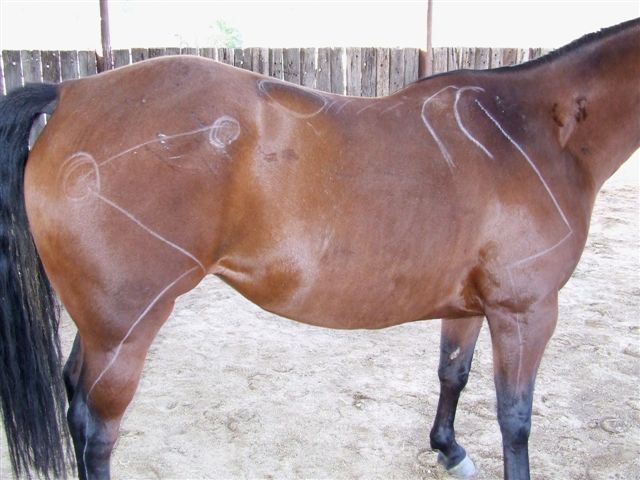
Stopping when horses have done the best they can do for now, even though they may not have met the expectations that you had, will gain a horse’s respect because you noticed how they felt and responded with compassion. Then is the time to step back, have a look and think about what you need to do to help bring the horse up to the level that you would like him to be at. What area do you need to address his soundness, nutrition, his understanding of the task, saddle fit or does he just need a break mentally and physically?
When horses are lethargic, unmotivated or termed lazy, often they just don’t have the physical energy to want to do things, even though they might look fat and shiny. This is where we often need to look into their health and soundness. If you want your horse to be active and energetic he needs to feel good inside himself. Sometimes we are just boring them to death and they see no purpose in what we are doing. This can cause them to be unmotivated or cranky, but even then if they have plenty of physical energy they will usually make their own fun and start playing their own games with you. The physical energy I am speaking of is not a nervous energy like when on adrenalin but a playful energy. If your horse is not feeling good he is never going to have a smile on his face.
Knowing how they are feeling emotionally.
Too often horse’s emotions are overlooked. We have been conditioned as a society to think that animals don’t feel emotion but this is not the case, they can feel the full range of emotions that we do. They just think differently and have different values than us.
When emotions are considered they are often misread.
For example on numerous occasions I have heard jumping horses described by their owners as ‘excited and loving to jump’ when in fact those horses were panicking and nervous and not able to think.
Quite commonly pushiness and crowding a person’s space is described as dominant behavior, which it can be, but in fact often they are only pushing into the human’s space because of underlying anxiety or fear. In a herd horses will huddle when they are fearful. When they don’t have confidence in our leadership skills and judgment they try to crowd us causing us to be ineffective and thus they can take over the leadership role in an effort to ensure their own safety. It is important to know the difference so then the situation can be handled appropriately.
The confusion of reading horses for most people stems from the fact that the same behaviors for example pushiness, bucking, rearing, biting etc. are exhibited from very different and even opposing underlying emotions. For example a horse might buck when he is playing, when he is in pain, when he is defiant and trying to get a point across to you, or when in fear. So the trick is getting in deeper and finding the underlying emotion behind the behavior. This really could be a whole separate article on its own but here are some ways to get started.
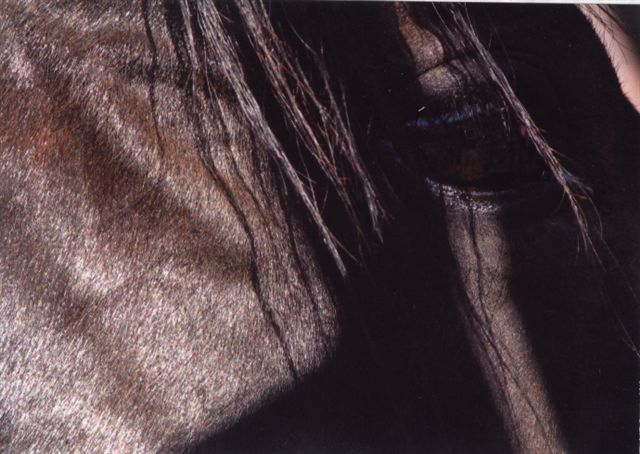
1) Try to step back out of the situation either physically or just in your observation of it and look at it from an outsiders point of view. This can sometimes give you a different perspective.
2) Get quiet and still (you can use slow deep breathing to centre your self) and look at your horse with soft eyes. Look at his overall body and look deep into his eyes and ask yourself what is going on for him.
3) With your imagination get into his body under his skin. Imagine yourself as a little particle just underneath his skin. Look out through your horses eyes and see things from his point of view. Feel what he is feeling in his muscles and body. Are the muscles tight or soft ? Feel the emotion he is feeling. Is it peace, boredom, depression, joy, anxiety, pain, confusion or anger ?
The more you practice the better you will get at reading and feeling the horse. It is about getting out of your head and feeling what is going on.
Having good balance, riding dynamics and understanding how horses move.
Have you ever really thought about what it really means to ride a horse? You are asking them to turn loose completely to you with their mind, their balance and the physical control of their body. When we saddle them and sit on their backs we interfere with their balance and how they move and then we ask them to be athletic. We tell them how to flex, how to hold their head, where to put their feet, when to change leads, when to take off for a jump etc.
When we take hold of the reins which are attached to a piece of metal in the mouth, one of the most sensitive places of the horse’s body, we can completely interfere with the horse’s balance, as the head and neck are the horse’s balancing system used to counterbalance the rest of his body.
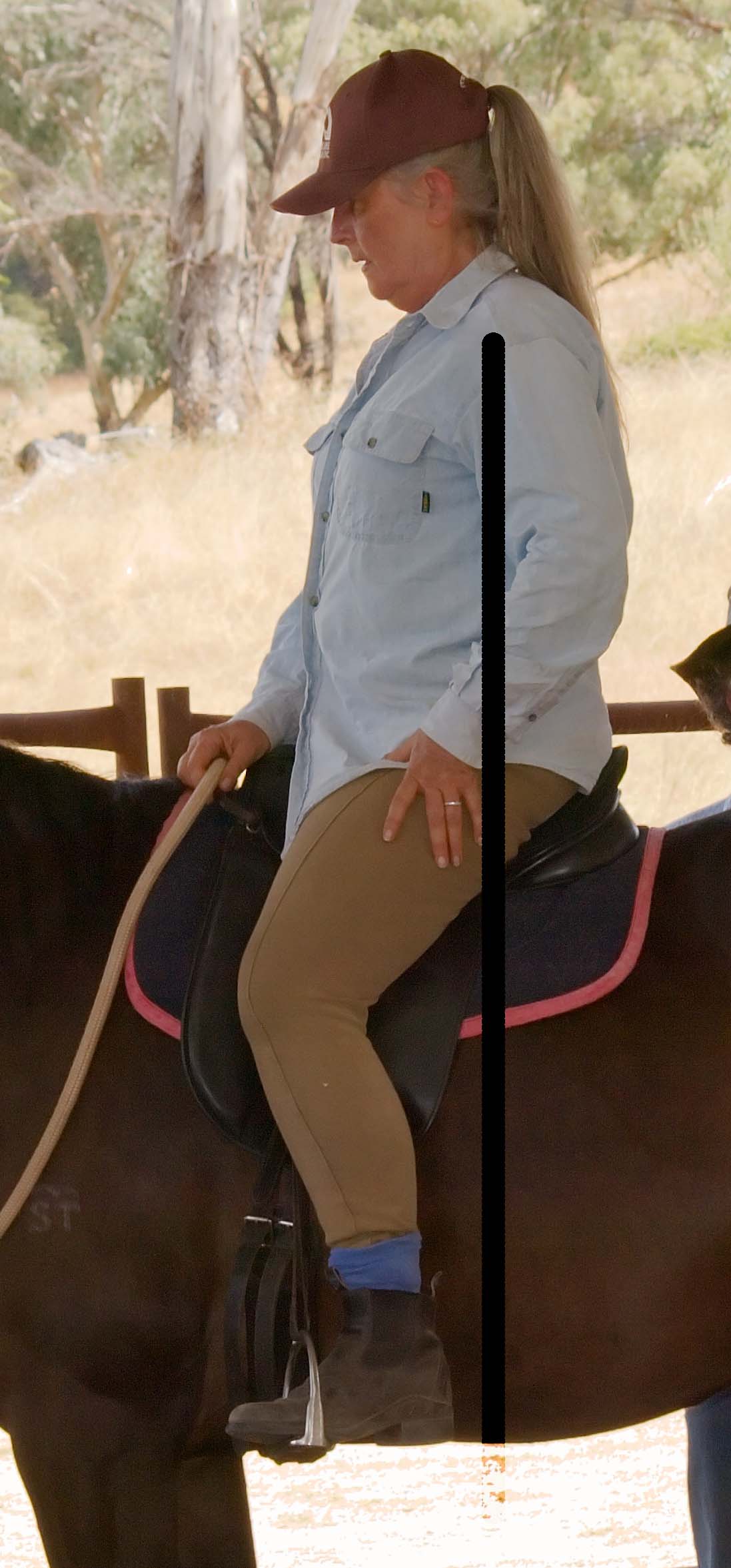
Fortunately horses are very tolerant and forgiving but to get your horse to really enjoy being ridden we need to understand the horse’s body, balance and movement and be able to enhance that and not interfere with it. Understanding the true biomechanics and balance of the horse and not just following the ‘fashion and fad’ of different sports and developing our own balance and coordination to allow the horse to move freely is critical to your horse respecting you as a rider and having a smile on his face.
Helping them feel safe, confident and leading them out of emotional turmoil.
When horses feel unsafe or emotionally lost, they will think the world of us when we can help them feel safe and lead them out of behavioral patterns that keep them in emotional turmoil. This is where excellent leadership qualities are required. Being cool, calm and collected as opposed to mentally and emotionally scattered is key. Horses will be drawn to and settled by our inner stillness and ‘centred’ energy as opposed to scattered energy. Good leadership means having the ability to stay focused but at the same time be flexible in how we go about getting to where we want to go. Horses need to feel certainty and confidence exuding from us and if we need to be firm or direct with them we can do so without feeling anger or frustration. What is important to note here is that the ability to not react from a negative emotional state is not about learning to hide or suppress those emotions within us but learning how to clear them and let them go.
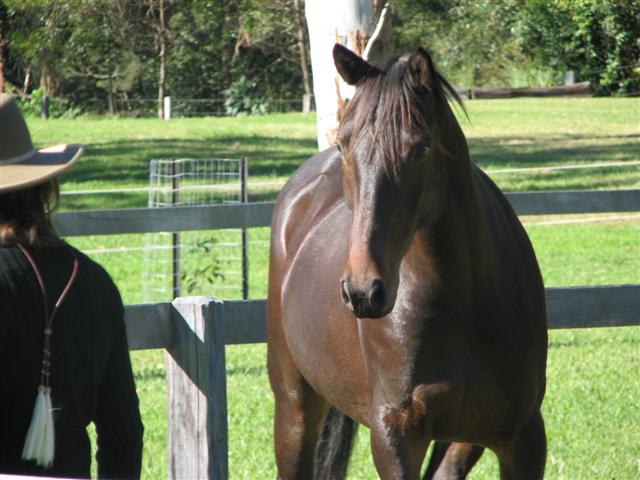
Being certain, dependable, focused, clear and having the physical energy to support those qualities, means being assertive.
When our communication is clear, we have focus or a plan even though we are always ready to adjust it, when we have feel and timing and we are not shouting or nagging with our communication these attributes will all lead to respect.
When horses are confident around us, they can sometimes start to play leadership games with us and we will need to step up and be assertive if we want to take the lead role in the partnership. When we don’t step up they will lose respect for us.
Respect is earned when we have the best interests of the horse foremost with our own goals secondary and where the horses feel that they are equals in the partnership with their perspectives and feelings considered. This of course means that we need to understand the many facets of horses. It is a combination of assertive, clear leadership equally combined with compassionate understanding of the horse. Horsemanship is undoubtedly a never ending quest for knowledge combined with practical experiences and while it can be the most challenging thing you could ever undertake it can also be one of the most rewarding when your horse bec omes a willing partner.
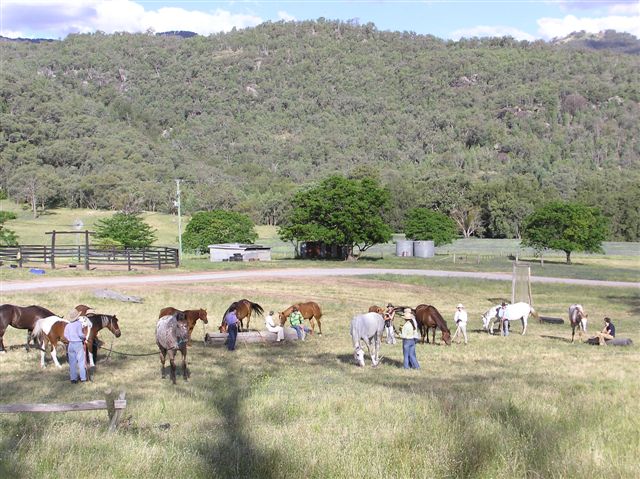
Mel teaching at ‘Alchemy Place’ her property in Moonbi. www.melfleming.com.au





